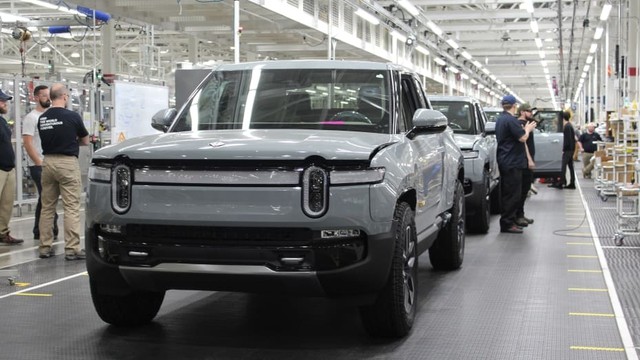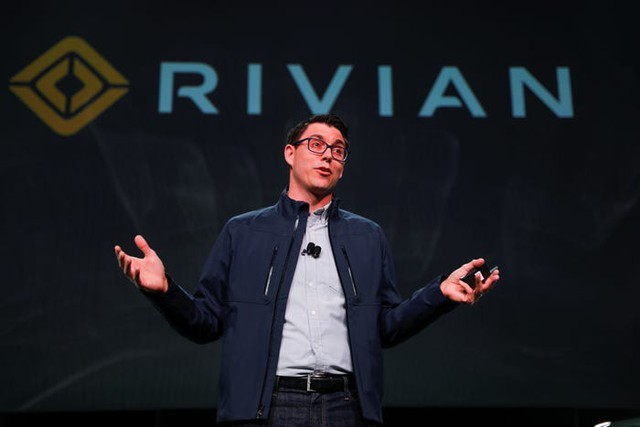How Rivian, an Electric Car Manufacturer, Defied Bankruptcy with Elon Musk’s Advice

In the first quarter of 2024, Rivian, an electric car startup, announced the layoff of 10% of its workforce, which consisted of 16,700 employees. This marked the third round of layoffs in two years for the company. With a loss of $33,000 per car sold and $9 billion burned in just two years, it seemed like a grim ending for Rivian.
However, according to Fortune, the young electric car manufacturer is making an impressive comeback since the layoffs in February 2024. The successful launch of their R2 SUV line and aggressive cost-cutting measures have boosted Rivian’s market capitalization by $1.7 billion, reaching $12.5 billion.
Although this figure is just a fraction of the peak valuation of $153 billion in 2021, it demonstrates the positive direction Rivian is now taking, which is being acknowledged by investors.
Listening to Elon Musk’s Advice
Last month, Rivian’s disappointing financial report raised doubts about the company’s survival. However, Tesla CEO Elon Musk praised Rivian’s products as “not bad.” Musk pointed out that Rivian needed to increase production, cut costs, generate positive cash flow, and strive for profitability to reassure investors.
In response to Musk’s advice, Rivian announced significant cost reductions, unexpectedly canceling a $5 billion factory project in Georgia. Instead, the company will produce their new electric vehicles at an existing plant in Illinois, saving $2.25 billion in investment costs.
Originally, Rivian planned to build a mega-factory in Georgia, similar to Tesla’s, to take advantage of government tax incentives. However, market downturns in the electric vehicle industry, political uncertainties related to the US elections, and investor concerns led Rivian to put the project on hold.
Emmanuel Rosner, an analyst from Deutsche Bank, believes that investors are more at ease now that Rivian has aggressively cut costs. This cost reduction has provided the company with sufficient capital to continue producing the R2 line without relying heavily on additional investments.
Furthermore, Rivian surprised the market by introducing the affordable R3 model, targeted at the lower-end market segment. CEO Robert Scaringe proudly stated, “People will definitely be surprised.”

According to Scaringe, over 68,000 pre-orders for the R2 were received within one day of its launch, with a starting price of $45,000. It is worth noting that the company is currently overwhelmed with order requests and is working to respond to them promptly.
Still Operating at a Loss
Despite Rivian’s recent successes, the company continues to operate at a loss for each vehicle sold. Until now, Rivian has not generated any profits after burning billions in cash. The electric vehicle market has also experienced a slowdown, with many consumers shifting their preferences to hybrid vehicles.
When Rivian entered the electric vehicle market, industry observers anticipated that the company would surpass its competitors to become the next Tesla of SUV electric cars. Investors flocked to the company’s highly attractive initial public offering (IPO) in 2021, raising nearly $12 billion in cash. This IPO became the largest in the US in several years, and at one point, Rivian’s market capitalization exceeded that of Ford Motor and General Motors.
However, after two years, Rivian has spent nearly half of its $18 billion cash reserve. Part of this was due to the company’s struggle to master the fundamentals of manufacturing. While production is now increasing, and losses have been minimized, Rivian still faces profitability challenges due to the high costs of producing and selling its vehicles.
The automotive industry is known for its slim profit margins and intense competition, leaving Rivian in a situation where production costs exceed sales revenues.
To address this, CEO Scaringe has been aggressively cutting costs and streamlining operations. The focus is on reducing payments to component suppliers, simplifying design aspects, and ramping up production to achieve profitability.
Although the losses have been narrowed as Rivian produces more vehicles, the company still burns over $1 billion in cash each quarter. Car manufacturers strive to operate their factories at maximum capacity as quickly as possible. Companies usually spend several years designing, manufacturing, and establishing new production lines to quickly increase output in a matter of weeks or months.
However, Rivian prioritizes the rapid introduction of new vehicle models with improved technology over short-term profits, which has resulted in production lagging behind cost demands.
Another factor that contributes to higher costs is Rivian’s push to build internally designed components rather than purchasing cheaper parts from reputable suppliers.
According to Wells Fargo analyst Colin Langan, Rivian spends $25,000 per vehicle on components, exceeding the cost of conventional market parts.
Although Rivian has recognized its mistakes after Elon Musk’s advice, whether the young electric car company can completely avoid bankruptcy, as predicted by Tesla’s CEO, remains an open question.
Nguồn: Fortune
